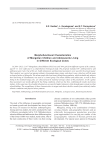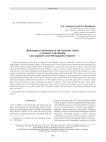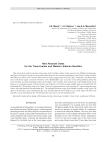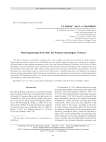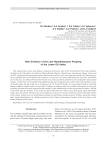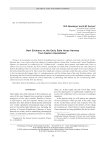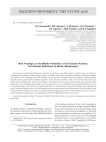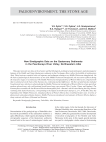Archaeology, Ethnology & Anthropology of Eurasia @journal-aeae-en
Статьи журнала - Archaeology, Ethnology & Anthropology of Eurasia
Все статьи: 524
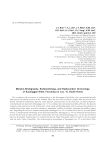
Статья научная
We reconstruct the processes of sedimentation at the Suyanggae Paleolithic sites, geomorphologically characterized by fl uvial terraces in the Namhan River, the base level of which is higher than the present river bottom. The fl uvial sedimentary deposits, slope deposits, and paleosols are the main units of surfi cial deposits, constituting the site materials of Suyanggae Loc. VI. According to the representative profi les of the site, the deposits comprise sands and gravel at the bottom part, while sands and fl ooding muds with occasional intercalations of reddish-brown slope muds, as well as rounded or subangular cobbles or boulders, dominate the middle to upper part. Regarding the terrace’s morpho-stratigraphy, Suyanggae Loc. VI is located above the low (second) fl uvial terrace. Considering the chronology of site material formations, Suyanggae Loc. VI was formed in the last glacial period. On the basis of radiocarbon dates obtained for the charcoals from Suyanggae Loc. VI, the age of cultural layers is determined. Cultural layer 2 was formed in the late Upper Paleolithic, and CL 3 and CL 4 are associated with the early Upper Paleolithic. The archaeological assemblage of Suyanggae Loc. VI is described: lithic artifacts of CL 2 are characterized by abundant microblades (ca 20 ka BP, Last Glacial Maximum), while those of CL 3 and CL 4 are associated with tanged points and blades (36–42 ka BP, middle of the last glacial period). Especially noted are a line-engraved cobble stone excavated from the sedimentary matrix of fl uvial origin, and a face-engraved pebble stone found in fl ooding muds. The fi nds are interpreted as manifestation of symbolic human behavior.
Бесплатно
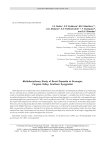
Multidisciplinary study of burnt deposits at Surungur, Fergana valley, Southern Kyrgyzstan
Статья
Бесплатно
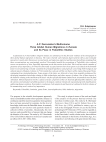
Multivolume three global human migrations in Eurasia and its place in Paleolithic studies
Статья научная
Academician A.P. Derevianko’s longterm studies are summarized in the fi rst four volumes of his monograph on three global human migrations in Eurasia. The routes whereby early humans dispersed from Africa and eventually spread over nearly entire Eurasia are reconstructed, and numerous empirical and theoretical problems stemming from these reconstructions are convincingly resolved. Derevianko headed the excavations of Paleolithic sites scattered across vast territories of Asia. Especially important are the discoveries in the Altai. This work has raised a number of questions of key importance, for which no universally accepted answers have been given so far. Based on the hominin fossil record and having critically examined the principal hypotheses and proposals concerning both biological and cultural aspects of human evolution, A.P. Derevianko has come up with his own theory of the origin of the genus Homo, originating from Australopithecines. Some groups of the latter are believed to have been mentally predisposed for developing cumulative knowledge relating to lithic technologies and other aspects of culture. One of these aspects is the behavior relating to the interment of the dead—the fi rst specifi cally human cultural trait, documented since the fi nal Acheulean. Human migrations involve a plexus of issues: properties of the raw material affecting lithic industries, and the extreme environmental variability peculiar to the largest continent. Despite the exponential growth of publications addressing human evolution, Derevianko’s conclusions, both empirical and theoretical, outlined in the fi rst volumes of his summarizing work, retain a key importance.
Бесплатно
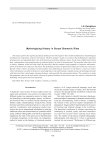
Mythologizing history in Buryat Shamanic rites
Статья научная
This study explores the regional specificity of Buryat rites with regard to the variable manifestation of mythological and historical components, and late innovations. The first attempt is made to reconstruct the mythological component of spoken texts accompanying these rites in the historical and ethno-cultural context. On the basis of field and archival data, contamination and transformation of myth and history in ritual is demonstrated. The principal characters such as deities, shamans, tribal and clan chiefs are described, and the semantics and pragmatics of ancestor and master- spirits in the historical context are discussed. The mythological status of supernatural characters of the rite is assessed. Specific ethnic criteria of turning real personalities into mythological characters in the historic context are listed. Universal features traceable in the process of turning history into myth include a regular mixture of mythological motifs with historical facts, interchange of temporal planes, and especially the reincarnation theme. The conclusion is made that pragmatic rites are the most stable, whereas the general tendency is that rites become less and less connected with mythology and progressively less hyperbolic.
Бесплатно
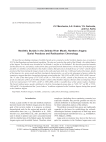
Статья научная
We describe new findings relating to Neolithic burials at two cemeteries in the Northern Angara area, excavated in 2012 by the Boguchany archaeological expedition. The sites are located at the outlet of the Zelinda—the right tributary of the Angara. Two burials were revealed at Ust-Zelinda-1, and five at Ust-Zelinda-2. We describe preserved remains and the funerary rite, and analyze radiocarbon dates generated from the human bones. On the basis of archaeological parallels, we attribute certain burials to the Isakovo culture. Burial practices include the use of “ocher” and the supine position of the buried along the Angara, heads to the south, upstream of the site. Calibrated radiocarbon dates, details of the funerary rite, grave goods and their typological characteristics, as well as the placement of graves within the cemeteries, suggest that three chronological groups existed within the 7499–5583 cal BP (5550–3634 cal BC) interval. The 14C date of the third group (5718–5583 cal BP, or 3769–3634 cal BC), details of the funerary rite, and grave goods are indicative of the Late Neolithic (Isakovo culture of the Southern Angara). Burials of the second group, which is the best represented (7157–6555 cal BP, or 5208–4606 cal BC), resemble those of the classic Isakovo tradition. The burial (without grave goods) attributed to the fi rst chronological group dates to 7499–7317 cal BP, or 5550– 5368 cal BC. It is hypothesized that “proto-Isakovo” traditions originated on the Northern Angara, having later spread to the Southern Angara.
Бесплатно
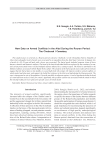
New data on armed conflicts in the Altai during the Rouran period: the Choburak I cemetery
Статья научная
This study focuses on a burial at a Rouran period cemetery, Choburak I, in the Chemalsky District, Republic of Altai, where altogether twelve burials were excavated by an expedition from the Altai State University. In kurgan 34a, a burial of a 30–35-year-old male with a horse was excavated. The burial goods included weapons, items of horse harness, utensils and domestic artifacts. The head of the buried individual had been replaced by the cranium of a ram, and certain postcranial bones revealed multiple injuries inflicted by a cutting weapon. The burial is attributed to the Dàlián tradition, associated with the Bulan-Koba culture. The analysis of the burial goods and a radiocarbon estimate suggest that the burial dates to the middle or second half of the 4th century AD. Injuries testify to armed conflicts, in which males had taken part, and support the belief that violence in the Altai was high during the Rouran period. The case is interpreted as one of decapitation. Given the parallels in adjacent regions, is can be hypothesized that the head of a ram had been used as a basis for a mask. Apparently, this peculiar custom was associated with the ritual in which the missing bodily part was replaced in specific cases of violent death.
Бесплатно
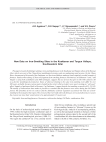
New data on iron-smelting sites in the Kuektanar and Turgun valleys, Southeastern Altai
Статья обзорная
Бесплатно
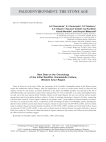
New data on the chronology of the initial Neolithic Gromatukha culture, Western Amur region
Статья обзорная
Бесплатно
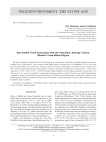
New dental finds associated with the Paleolithic Selenga culture, Western Trans-Baikal region
Статья
Бесплатно
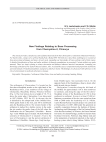
New findings relating to bone processing from Chernyatino-2, Primorye
Статья научная
The article provides a detailed account of faunal materials from the Chernyatino-2 settlement in Russian Primorye. For the first time, a large series of bone blanks from a Bohai (698–926 AD) site is described, enabling us to reconstruct bone-processing techniques and types of tools used, expanding our knowledge of bone-working craft of that region. A detailed classification of bone and antler artifacts of domestic manufacture is presented. Certain artifacts are quite unusual. There are items relating to winter movement and hitherto unknown musical instruments, extending our knowledge of medieval Far Eastern musical culture. Also, we detail the species composition and proportion of domestic and wild animals. Predominant families and genera of fish are listed. The findings are discussed with reference to the role of environment in medieval subsistence strategy.
Бесплатно
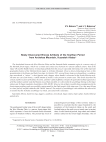
Newly discovered bronze artifacts of the Scythian period from Archekas mountain, Kuznetsk Alatau
Статья
Бесплатно
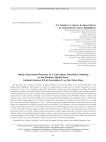
Статья научная
We describe a new complex of remains in cultural horizon 3/2 of the Kovrizhka IV site on the Vitim River in the Baikal-Patom Highlands. This feature is a cluster of archaeological remains near the hearth, enclosed by an oval pavement 4.7 m by 3.2 m, consisting of eight slabs. The feature is interpreted as the remains of a dwelling. The spatial arrangement of finds is described. Rather than taking a central position, the hearth is shifted to the probable entrance in the northeastern part. Under one of the slabs of the pavement, an ocher spot was found. Qualitative and typological characteristics of the artifact assemblage are provided. The feature yielded about 2400 lithic artifacts. On the basis of the use-wear study of selected artifacts, four retouched and unretouched flakes are identified as knives. Other tools include a biface-wedge-shaped core, a bifacial scraper-knife, two fragments of unifacial scraper-like tools, a cutting tool, and retouched flakes (altogether 12 spec.). There are also three wedge-shaped narrow-faced microcores, one of which was knapped from a bifacial preform, and two from flakes. The comparison with two dwellings and a hearth complex previously discovered at Kovrizhka IV, the results of AMS-dating (the age of the complex is estimated at ca 18.9–18.6 ka BP), and the analysis of lithics have shown that the site belongs to the early stage of the Late Upper Paleolithic of the Lower Vitim. Anthracological data indicate a tundra-steppe landscape with islets of shrubs (dwarf or shrubby willow). We conclude that the dwelling evidences a short-term occupation episode. Along with the previously excavated features of Kovrizhka IV, the complex in cultural horizon 3/2 gives an idea of the culture and subsistence strategies of the Late Upper Paleolithic people at the end of the Last Glacial Maximum.
Бесплатно

